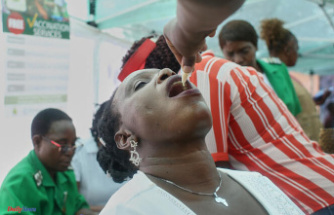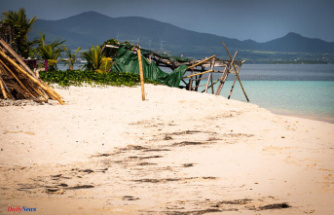For now, relief dominates in Reunion Island. “We are not at all out of the cyclone, but we are below the cataclysmic character” affirmed Monday January 15 the prefect of the island, Jérôme Filippini, during a videoconference, after the feared passage of cyclone Belal. Its eye grazed the territory without really penetrating inland, causing heavy rains and wind gusts of up to 200 kilometers per hour in places. The extent of the damage must now be assessed, but several preventive measures had been put in place beforehand to limit the material and human consequences.
While the Minister of the Interior, Gérald Darmanin, is expected in Reunion on Wednesday to support the victims and the personnel responsible for relief, the State was able to count on a well-established system of local authorities to anticipate and react to the passage of the cyclone .
As soon as the island is threatened by a cyclone, a vigilance system – made up of four colors grading the weather dangers and the instructions to follow – is triggered. Initially, a yellow pre-alert can be activated to indicate the approach of a cyclone threat in the days following the Météo-France alert.
Concerning Cyclone Belal, Reunion Island was placed on cyclonic orange alert from 7 p.m. local time (4 p.m. in Paris), Saturday January 13. Residents were asked to prepare to be isolated for a few days by stocking up on water and food and to anticipate power or water outages. It was recommended to obtain a camping stove, a flashlight, batteries or even a battery-powered radio, as well as to prepare accommodation for strong winds by consolidating openings.
As the cyclone approached, the island was placed on red alert on Sunday. A complete lockdown was imposed from 8 p.m. local time (5 p.m. in Paris), and the use of telephones was limited to absolute necessity. Accommodation and living centers for patients needing electricity for the continuity of their care have been opened.
Monday morning, at 6 a.m. local time (3 a.m. in Paris), the territory went into purple alert. “This implies strict confinement of the entire population, including emergency and security services and [of] all agents mobilized for crisis management (the only ones authorized to travel under red alert). All traffic is strictly prohibited for any reason whatsoever,” explained the prefecture. At 1 p.m. local time (10 a.m. in Paris), following the change in the cyclone's trajectory, the alert was lifted, returning to red and allowing emergency interventions to resume. Some 100,000 Reunion residents were deprived of electricity during the day on Monday, and 130,000 no longer had access to running water.
As of Saturday, a number of accommodation centers had been opened in the city of Saint-Denis. “We went to look for people living on the edge of the ravines, as well as the homeless,” reports its mayor, Ericka Bareigts. Five hundred places had been made available. On Monday, some one hundred and nineteen people were finally welcomed. “We always prepare for the worst when we are told of a disaster,” says the councilor. But, despite these precautions, a homeless person was found dead in Saint-Gilles.
Across the island, seven hundred people were admitted to these centers, which were under low demand. The commune of Saint-André welcomed at the Jean-Perrin high school "people whose unworthy homes risk being destroyed by floods", as well as "homeless people", said Sarane Jean Bernard , the accommodation center representative.
“Town halls are well organized and equipped” but “the poor quality of many social housing units was not anticipated,” points out Erick Fontaine, head of the National Housing Confederation. The latter deplores homes which do not meet standards and which suffer significant damage. The passage of this cyclone “reminds us that we cannot build just anywhere,” he insists.
According to the latest report from the Abbé Pierre Foundation, published in May 2023 on poor housing in France, nearly four out of ten Reunion Islanders would be impacted by the housing crisis. According to the latest data from INSEE, there are 22,857 precarious buildings, including 20,939 wooden huts and 11,918 makeshift dwellings in Reunion.
The efficiency of the systems put in place to manage natural risks is currently being evaluated as part of a parliamentary inquiry. This must relate “to the evolution of natural disasters in so-called overseas territories and will assess whether the response of the State and other actors – communities, insurance companies, public companies, public establishments – responsible for security public is up to the challenges", according to a report from the National Assembly.
In 2015, an audit of the implementation of the national policy for the prevention of natural and technological risks in Reunion Island estimated that “the consideration of cyclonic risk remains, however, largely room for improvement in terms of compliance with paracyclonic construction rules.” .
In addition to the infrastructure that can be improved, the mayor of Saint-Denis fears, in the long term, the effects of climate change on the appearance and trajectory of cyclones. If Reunion Island is regularly hit by cyclones, the risks of which are high between January and March, cyclones may prove more intense and violent due to climate change, reported the sixth report of the Intergovernmental Panel on Climate Change. climate (IPCC). “We should provide a response to protect populations,” insists Ms. Bareigts. “We need means for regional planning” to limit rising water levels and, in the longer term, prepare for the effects of climate change, she warns.












